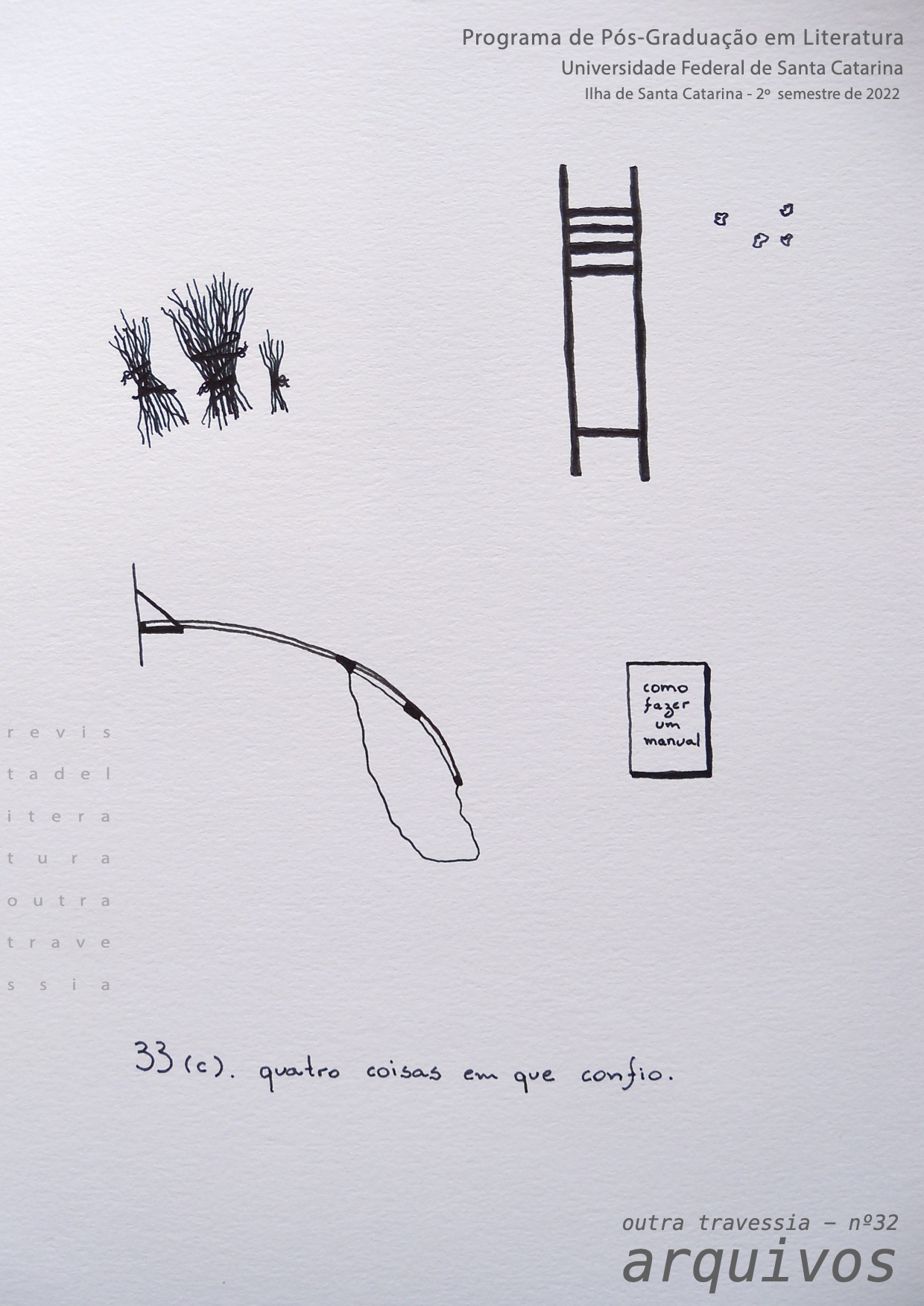A poesia de Anne Sexton e a indústria cultural
DOI:
https://doi.org/10.5007/2176-8552.2021.e84233Schlagworte:
Anne Sexton, indústria cultural, neo-surrealismo, conto maravilhoso, marcaAbstract
Esse artigo busca interpretar a importância da reflexão poética acerca da indústria cultural na obra de Anne Sexton. Não raramente comparada à Sylvia Plath, Sexton elabora, com efeito, uma dicção poética fortemente marcada pelo neo-surrealismo, procurando pelos elementos do discurso da indústria cultural, tais como o horóscopo, o conto maravilhoso, a linguagem das marcas. Nesse sentido, a poesia de Sexton revela também seus traços não românticos e mais atentos à poética do objeto surrealista remanescente do ready-made. A poética do horror, inerente ao caráter indizível da situação surrealista do objeto participa dessa dicção poética dilacerada pela violência simbólica. Estabelecendo uma relação com a função mágico-religiosa, a linguagem da indústria cultural reivindica também o impacto real na realidade.
Literaturhinweise
ADORNO, W. Theodor e HORKHEIMER, Max. Dialética do esclarecimento. Trad. G. A. de Almeida. Rio de Janeiro: Zahar, 1985.
BABY, Yvonne. Une garde-robe pour l’élégance. Genève: Minerva, 2000.
BALDENSPERGER, Fernand. “Préface”. In. VIGNY, Alfred de. Œuvres complètes. Pléiade. Paris: Gallimard, 1950.
BAUDELAIRE, Charles. Poesia e prosa. Trad. Vários. Rio de Janeiro: Nova Aguilar, 1995.
BAUDUIN, Tessel M. Surrealism and the Occult. Occultism and Western Esotericism in the Work and Movement of André Breton. Amsterdam: Amsterdam University Press, 2014.
BRETON, André. Je vois, j’imagine. Paris: Gallimard, 1991.
BRETON, André. Poems of André Breton. A Bilingual Anthology. Boston: Black Widow Press, 2014.
BHABHA, K. Homi. O local da cultura. Trad M. Ávila et al. Belo Horizonte: Editora da UFMG, 1998.
CROWTHER, Gail. Three Martini Afternoon at the Ritz. The Rebellion of Sylvia Plath and Anne Sexton. Nova Iorque: Gallery Books, 2021.
DIDEROT, Dénis e D’ALEMBERT, Jean. Verbetes políticos da Enciclopédia. Trad. M. das Graças de Souza. São Paulo: Editora da UNESP, 2006.
GEERTZ, Clifford. “Religion as a Cultural System”. In. BANTON, Michael (org.). Anthropological Approaches to the Study of Religion. Londres: Tavistock, 1968, p. 1-46.
GRIMM, Jacob e GRIMM, Wilhelm. Märchen. Munique: Th. Knaur Nachf., 1937.
HELDER, Herberto. Photomaton & vox. Rio de Janeiro: Tinta-da-china Brasil, 2017.
HELDER, Herberto. Poemas canhotos. Rio de Janeiro: Tinta-da-china Brasil, 2018.
JONES, Terry e MAIR, Avril (org.) Fashion now. Colônia: Taschen, 2005.
LEAVELL H. Ava. Why the House is Made of Gingerbread. Baton Rouge: Louisiana State University Press, 2010, e-book.
LIPOVETSKY, Gilles. O império do efêmero. A moda e seu destino nas sociedades modernas. Trad. M. L. Machado. São Paulo: Companhia das Letras, 2009.
MORRISON, Toni. Voltar para casa. Trad. J. R. Siqueria. São Paulo : Companhia das Letras, 2016.
MUKAROVSKY, Jan. Escritos de Estética y Semiótica del Arte. Barcelona: Editorial Gustavo Gili, 1975.
MUSSET, Alfred de. Poésies complètes. Pléiade. Paris: Gallimard, 1951.
OSSIP, Kathleen. “Are We Fake? Images of Anne Sexton, Twentieth-Century Woman/Poet”. In. GOLDEN, Amanda (org.). This Business of Words. Gainesville: University Press of Florida, 2018, p. 179-195.
PLATH, Sylvia. Ariel. Nova Iorque: Harper & Row, 1965.
SCHOOLMANN, Morton. Reason and Horror. Critical Theory, Democracy and Aesthetic Individuality. Nova Iorque: Routledge, 2001.
SEXTON, Anne. The Complete Poems. Boston: Houghton Mifflin, 1981.
TABONE, Mark. A. “Dystopia, Utopia and ‘Home’ in Toni Morrison’s Home”. In. Utopian Studies 29, 2018, p. 291-308.
Downloads
Veröffentlicht
Ausgabe
Rubrik
Lizenz
Os artigos e demais trabalhos publicados na outra travessia passam a ser propriedade da revista. Uma nova publicação do mesmo texto, de iniciativa de seu autor ou de terceiros, fica sujeita à expressa menção da precedência de sua publicação neste periódico, citando-se a edição e data dessa publicação.
Esta obra foi licenciada com uma Licença Creative Commons Atribuição-NãoComercial 4.0 Internacional.



